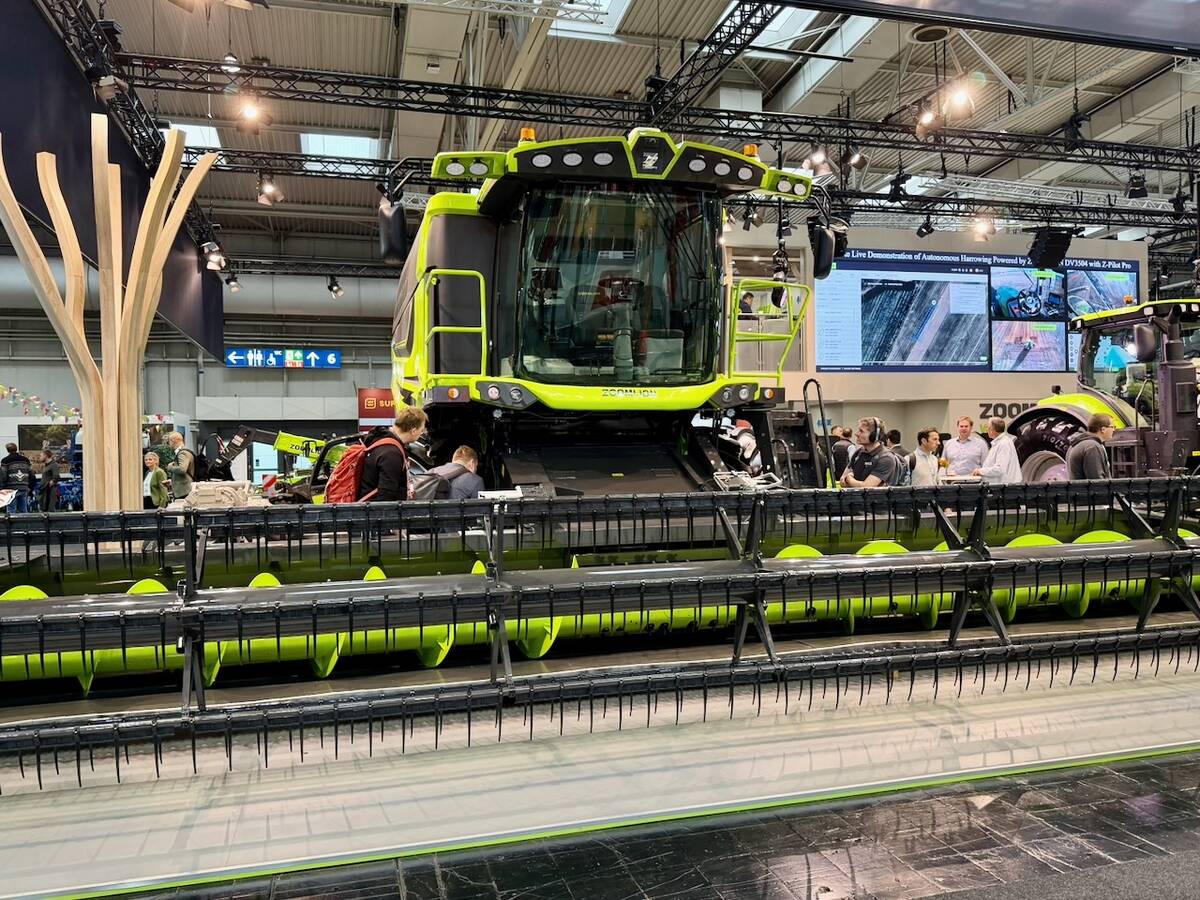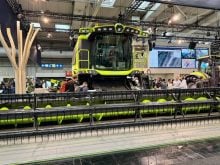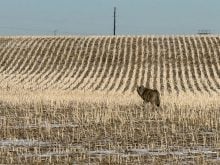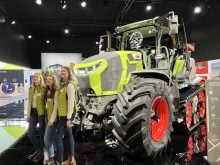Crop spraying has long been at the forefront of a debate over pesticide use and consumer safety.
Now, innovations in spraying are making it possible to reduce spray drift, making spraying more effective, acceptable and safe, said Dennis Gardisser, an American specialist who was in Saskatoon last week for a meeting of agricultural retailers held by Monsanto Canada.
Farmers and custom applicators can work to correct the public’s perception that all spraying is dangerous. By using new means of application, they will save on spray costs and obtain better pest kills.
Read Also

Agritechnica Day 3: Hybrid drive for a combine, data standards keep up to tech change and tractors of the year
Agritechnica 2025 Day 3: Hybrid drive for a combine, data standards keep up to tech change and tractors of the year.
“The Turbo Drop type nozzle provides air mixing without the cost of an air-assisted boom system,” said Gardisser.
The new sprayer tip mixes air with the fluid as it passes the nozzle. Provided that enough fluid pressure is used, the air is mixed into the solution, increasing droplet size. That leads to less spray drift.
Another system, in which electrostatic charges are added to the chemical as it is being applied, may have a future in the industry, but Gardisser feels it may not solve the issue of drift. The electrostatic charge which has been added to the fluid is transferred to plant tops. The tops containing the charge create a polarity field around them and other droplets are attracted to the opposite ends of the foliage.
Any wind is bad
“The tiny droplet size needed to allow for magnetic attraction also means that any amount of wind will create drift,” he said.
Air-assisted boom sprayers have proved popular lately, but their high initial cost and higher maintenance due to separate air and fluid systems, make them impractical for many users.
The major advantage of the Turbo Drop type nozzle over others is it reduces extra fine droplets, according to a USDA study done in Stoval, Miss. The design also allows applicators to use smaller nozzles than they could normally.
Electronically controlled syncro nozzles may provide most of the answers in the future, said Gardisser. Developed at the University of California at Davis, the system uses a servo controlled valve located at each nozzle that can turn off and on at high rates, as much as 2,000 times per minute.
Can be customized
Producing a pattern that does not vary as pressures and rates change, the system can also be customized to work with a global positioning system and individual boom controls.
Costs associated with this type of sprayer exceed $14,000 for an 18 metre unit.
“Hoods or canopies over spray booms have to be designed properly. They can increase the amount of drift because of the turbulence they create behind the sprayer … . A tapered shroud with an air foil design is really the only way to go unless you use individual shrouds for each nozzle,” he said.
Gardisser is an agricultural spray engineer and extension specialist with the University of Arkansas.














